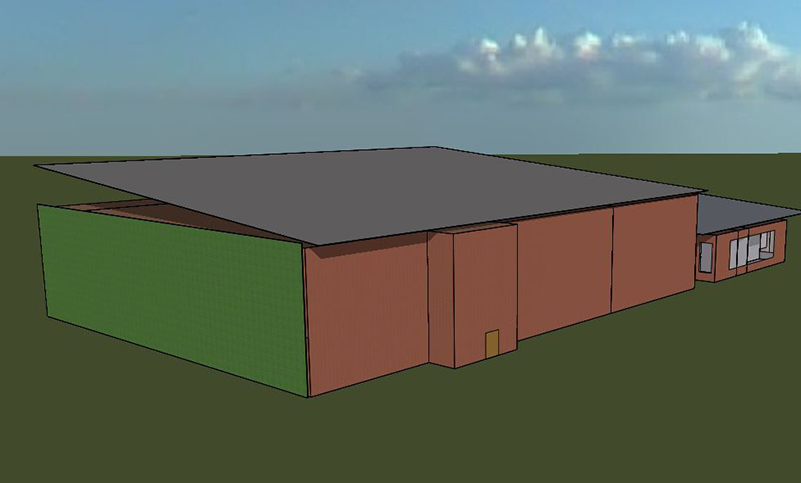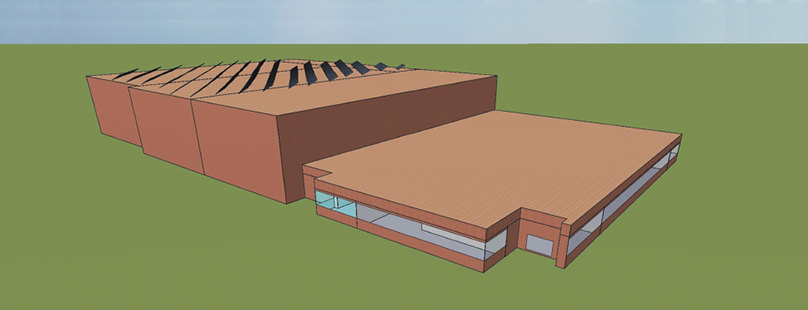First Place and Fan Favorite
Team: Sustainability Savants

Overview:
The climate in the Washington DC metro area is characterized by warm, humid summers; together with the stringent temperature and humidity requirements for the collections areas, this presents a significant challenge in designing an efficient system, with the target being minimizing energy usage (and thereby energy costs as well). In developing the model of the existing facility, the air system, with its large supply volume and high static pressure, was noted as the primary source of energy usage, between fan energy and space conditioning.
The approach taken, then, was to reduce loads in the collections spaces as much as possible, with the goal being to enable supply of only required ventilation air. Improving the insulation between the office and storage bays, and shading both the western façade and roof, reduce conductive gains. Infiltration is reduced by construction of vestibules around the external doorways for the storage bays, as well as an operational emphasis on never having a direct air path from either office or external air into the collections. Internal gains are relatively minor, but reducing the lighting gains via LED lighting with data center-style “follow me” occupancy sensing controls greatly lessens any additional cooling load.
 View the team poster
View the team poster
Second place
Team: Sandstorm Stoppers

Overview:
The hardest part in a retrofitting project is tuning energy model to existing building in respect to specific energy consumption per component. Therefore, our work started with analyzing existing building energy consumption in respect to its location, size, typology, and HVAC system. The challenge was to gather enough information from data provided by ASHRAE and collecting other data such as weather, HVAC system efficiencies, and architectural design.
Our target was to evaluate maximum possible energy generation from PV panel and then work from top to bottom to reduce energy consumption. We analyzed our results of existing building and found out that space heating and heating in general have highest thermal load which then dominates the energy consumption due to building envelope and use of electric resistance coils.
We reduced the energy consumption by 86% using passive and active design strategies without using renewable. Overall, our retrofit building consumes 94 % less energy but is not net zero. We recommend increasing Photo Voltaic Panel area by 100 % to achieve a net zero energy building.
 View the team poster
View the team poster